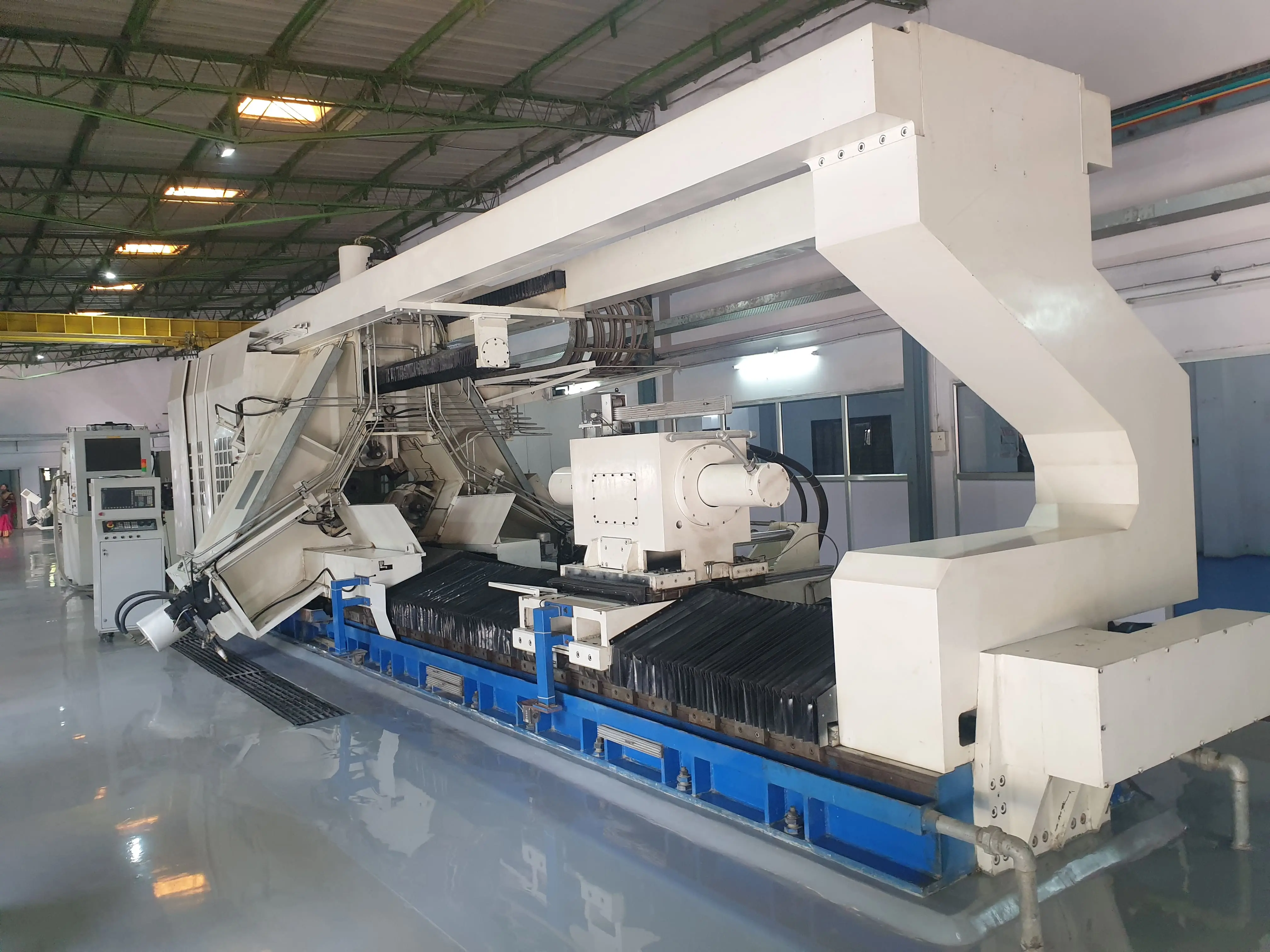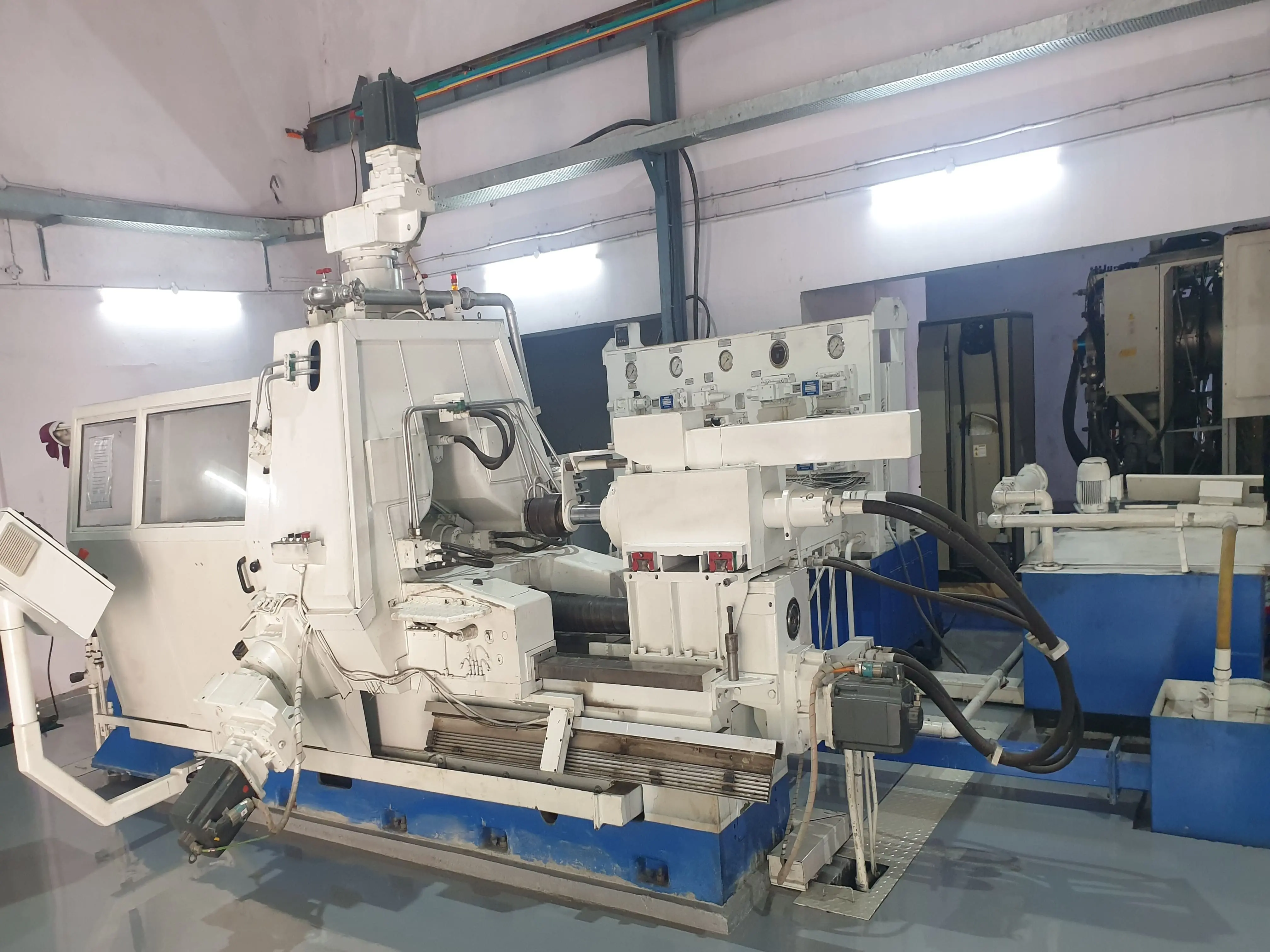FLOW FORMING MANUFACTURING
An advanced, cold forming process used to manufacture dimensionally precise, round, seamless, hollow components. This process is used to produce hundreds of different thin-walled components to net or near-net shape. Our satisfied customers come from some of the most demanding Military, Nuclear, Aerospace and Industrial Markets. They appreciate the fact that the flow forming process can be a cost-effective alternative to conventional manufacturing practices. Other customers utilize flow forming to reap the dimensional, mechanical or metallurgical benefits.

India's Largest 3 Roller CNC Flow Forming Machine
- Max Diameter: 700 mm
- Min Diameter: 100 mm
- Forward Forming: 3000 mm
- Reverse Forming: 6000 mm

3 Roller CNC Flow Forming Machine
- Max Diameter: 350 mm
- Min Diameter: 25 mm
- Forward Forming: 1000 mm
- Reverse Forming: 2000 mm
Our Methods
- Forward Flow Forming: Forward Flow Forming is used for components with one closed or partially-closed end such as a closed bottom or partially closed cylinder. Once the preform is inserted over the mandrel, its inner bottom is locked against the tip of the mandrel by means of hydraulic force from the tailstock. As the mandrel and preform rotate, the carriage is made to travel in a right to left direction. The rollers apply force to the outside diameter of the preform and there is a precalculated amount of wall reduction. As the wall is thinned and the outer diameter is reduced in size by the combination of controlled radial and axial forces, the finished component takes shape to the right of the rollers. The balance of unflowformed material moves ahead and to the left of the rollers.
- Reverse Flow Forming: Reverse Flow Forming is utilized to produce a component with two open (unrestricted) ends such as a tube. Once the preform is placed on the mandrel, it is pushed all the way to the left side against the drive ring at the end of the mandrel. Like Forward Flowforming, the carriage also moves in a right to left direction. As the axial thrust of the rollers applies force to the right of the preform, the metal is pushed into and entrapped by a series of serrations on the face of the drive ring. This assures the necessary rotational drive of the preform during the process cycle. With the carriage traveling left, the flowformed metal moves to the right, under and in the opposite direction of the rollers.
- Shear Flow Forming: Shear Flow Forming is used to form conical, radial, parabolic or ogivial geometries. The preforms are typically in the shape of circular discs. With the preform held firmly against the nose of the mandrel by hydraulic force from the tailstock or by other mechanical means, the carriage is made to move right to left. The rollers plastically deform ("shear") and flow the available metal against the mandrel. Shearforming can be described as a combination of metal spinning and forward flowforming.
